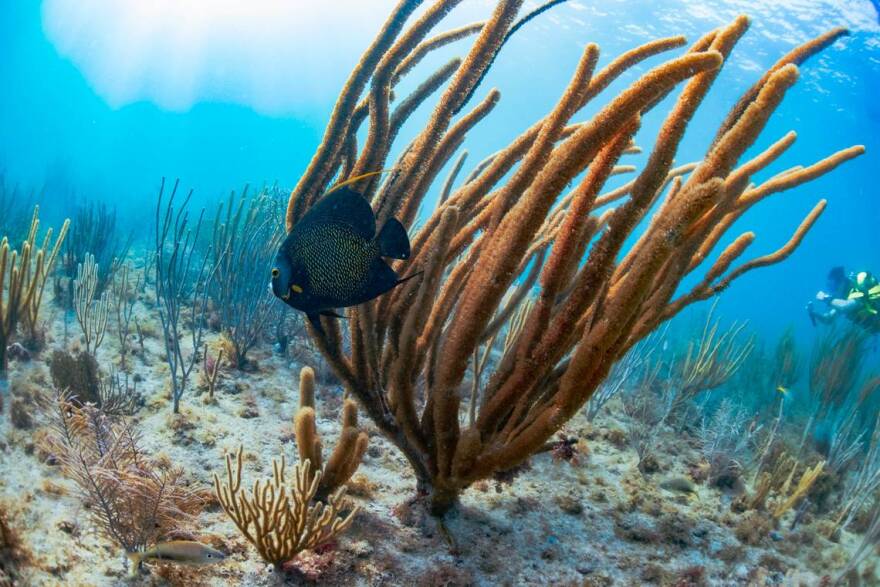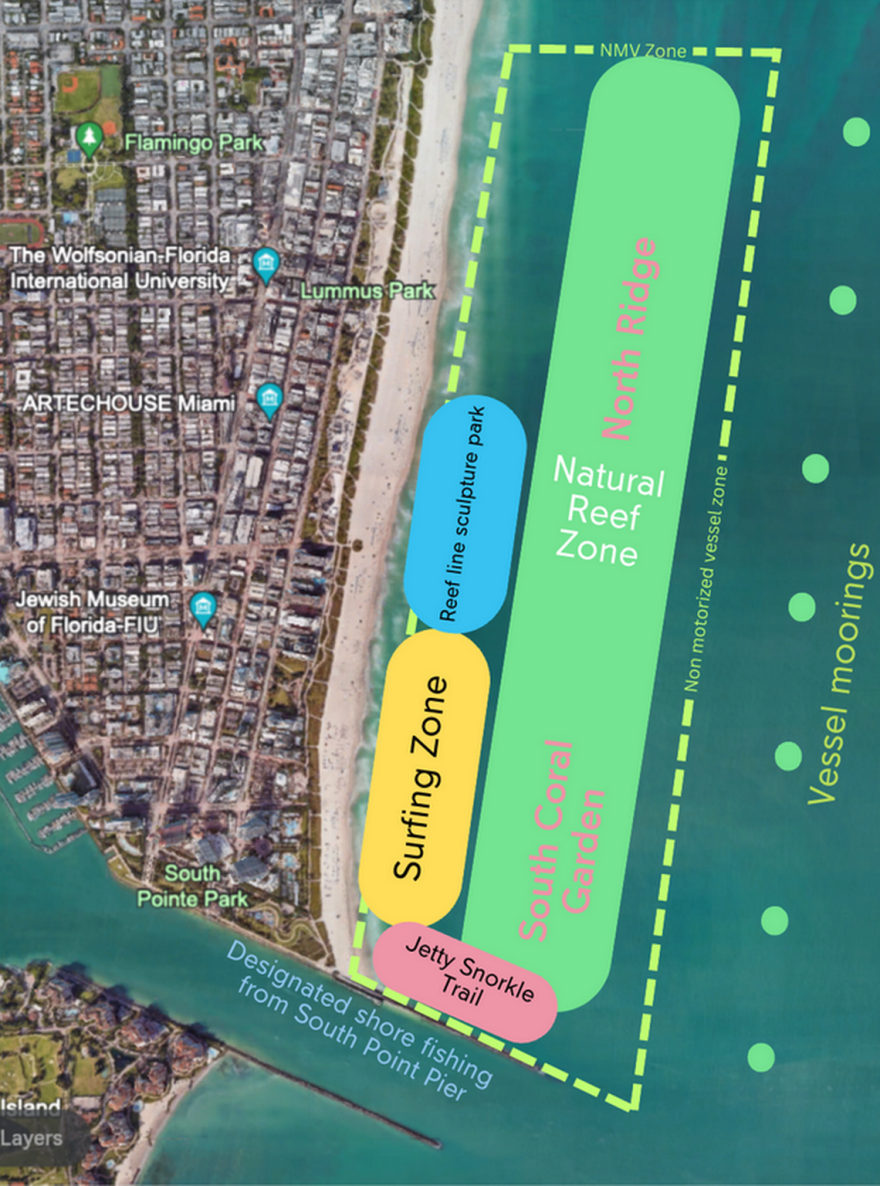South Beach is one of Florida’s busiest stretches of sand, filled with tourists partying, sunning and frolicking in the surf. Little do they know that a short swim away — just on the other side of the no-boats buoys — lies a spot of quiet, natural beauty.
It’s a vibrant reef, covered with colorful corals and schools of bright tropical fish joined by sharks, turtles and other marine life — a underwater gem surprisingly close to the mainland.
Now, a group of environmentalists and divers are pushing to protect the reef line just off South Beach. They hope to have it eventually declared a marine park where fishing in some areas could be off-limits — a proposal that would need approval from a lot of government agencies and likely draw objections from anglers.
As a start, they want the existing buoy line off much of South Beach moved out beyond the reef edge to stop boaters from speeding over it or anchoring there. Just last week, they say an anchor dropped down right into the reef, damaging corals. Another time, a boater zoomed 50 mph right by a diver.
They say the reef seems to be thriving better than many in a tract that extends down through the Florida Keys, where waters that climate change is turning increasingly hot have triggered periodic bouts of damaging coral bleaching. The argue that a section of reef they call the North Ridge, roughly east of Sixth Street, rivals the best-near shore sparkling spots in the Keys, including the Near Shore Marine Park off Key West.
“What we have off of Miami Beach is just as accessible,” said David Grieser, who is on the board of the conservation non-profit, Urban Paradise Guild. “It’s in an area where people can enjoy a safe, family-friendly experience.”

On a recent snorkeling there, Grieser was surrounded by sea life in waters that are about 15 feet at the deepest — angel fish, cow fish, french and blue striped grunts, a school of tarpon, a pair of juvenile nurse sharks swimming through coral, and a sea turtle. He said he even saw a seahorse buried in a seaweed mat once.
“Not a lot of people know about it but it’s right in our backyard,” said Karen Monteagudo, founder of Women’s Water Collective, a group that pursues water sports like surfing and free diving.
Monteagudo said she started exploring the Miami Beach reef eight years ago, and started snorkeling it in 2020. She never saw other divers until Grieser also found it during pandemic shutdowns. There was a lot of discussion between the two about whether telling the world about what felt like their “little secret” would hurt or help the reef. One red grouper or lobster could entertain hundreds of divers a day but only one fisherman.

But they decided showing more people its beauty would be the best course for winning more support to protect it. They’ve drawn up a proposal to create a marine park from the South Pointe jetty north to 12th Street. Their proposal would call to stop fishing in some yet-to-be designated areas where divers and snorkelers would most likely be but they haven’t drawn any lines on maps yet. They say establishing some no-fishing zones would protect both the resource and its visitors.
Creating a marine park would likely require approval from a lot of agencies and likely take years. The Florida Keys has a string of similar protected marine areas around many popular coral reefs but efforts to impose them are always controversial. Recreational and commercial anglers, for instance, fought some similar proposals for Biscayne National Park. The Florida Fish and Wildlife Conservation Commission, which writes rules for state waters, generally opposes efforts to shut down fishing.
As a first step, the marine park advocates are proposing moving the no-boating zone a few hundred yards further from the beach and confining shore fishing to South Pointe Pier.
Grieser said he expects give and take with these loose boundaries that could be worked out with regulatory agencies but the idea would be to accommodate multiple uses, all with the intention of protecting the reef and marine life. For instance, their proposal calls for encouraging spearing invasive lionfish with appropriate spears in the proposed park.
The government agency, Florida Fish & Wildlife Conservation Commission, told the Miami Herald they are aware of the group but they have not received a formal request.

The area also include a spot north of Fourth Street where phase one of a multimillion dollar underwater sculpture park art installation, Reefline, is planned.
Initially, the Reefline project got pushback from The Surfrider Foundation, an environmental nonprofit that feared it would disrupt one of the better surfing spots in South Florida. They have since signed an agreement that moved the installation past the surf break.
Surfrider is on board with turning the natural reef into a marine park.
“I think what they’re doing is a great idea,” Mike Gibaldi, vice chair of SurfRider Foundation said. "There are plenty of other places to fish, and the reef’s not in the surfing zone because it’s far enough north."
Grieser is working on an application with the state to protect the area, but acknowledges it could be a years long process. To get involved in turning the area into a marine park, Grieser suggests to visit the Land-Bay-Reef landing page on UPG’s website.
"Here is this amazing asset that’s always been here,” Grieser said. “No one has to build anything, its ready to be an awesome park. It just needs the basic protections first."
Ashley Miznazi is a climate change reporter for the Miami Herald funded by the Lynn and Louis Wolfson II Family Foundation in partnership with Journalism Funding Partners.





